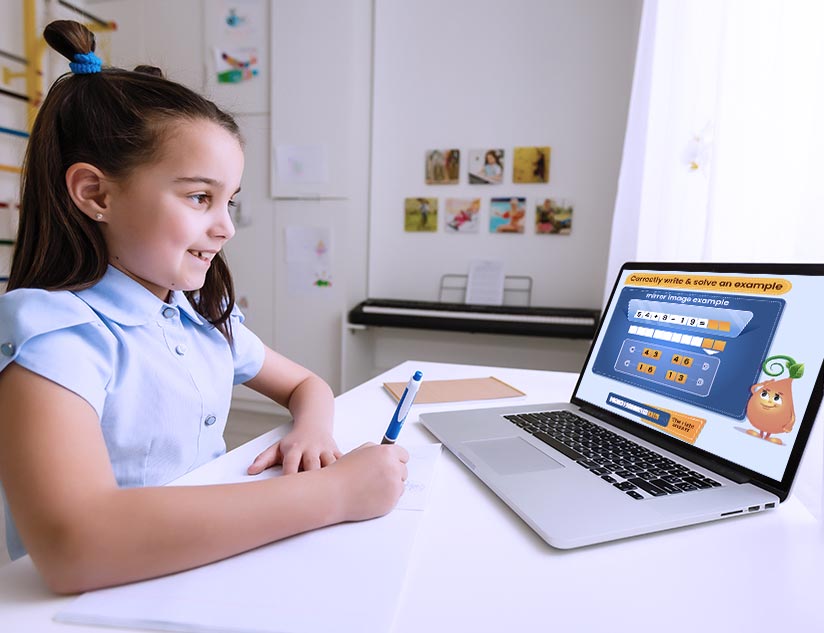5 Questions to Ask a Classroom Learning Technology Provider
July 13th, 2020
The most significant developments in history are often said to be born out of the hardest-hitting crises. The cataclysmic Second World War paved the way for women’s professional empowerment. Technology and computing emerged stronger, and from unexpected quarters of the world, after the Y2K crisis. The SARS outbreak is known to have inspired the rise of China’s e-commerce industry.
COVID-19 has swept through the world, leaving us in stunned silence, shutting down business and life and putting an indefinite halt to economic activities. School closures worldwide impacted over 1.2 billion children, according to UNESCO. EdTech, global investment in which reached 18.66 billion in 2019, is now offering an effective way to deliver education during these trying times of social distancing.
Even as institutions scramble to find the best options for K-12 and higher education, choosing the right EdTech provider is equally urgent. Accessibility and personalization of learning are two of the primary considerations while making the decision. However, at the fundamental level, choosing your learning tech partner boils down to doing a little due diligence and asking the right questions. Here’s a look at some of the most important questions to help you choose the technology that you wish to integrate into education.
1. How does the platform benefit students?
With the world turning to remote learning during the COVID-19 crisis, online learning platforms have gained prominence. However, the ideal EdTech platform should offer efficient channels for personalized, adaptive learning through smart analytics and tracking, while also easing remote learning. The degree of personalization and customization can determine how user-centric the platform is. You should be able to publish new educational content and onboard your legacy content and systems quickly. For instance, does the platform allow you to convert any content into the ePUB3 compliant format? This HTML5-supported standard makes content reflowable and enriches it with interactive media, such as video, audio, and gaming elements, essential for student engagement. It should also support all major devices and OSes. While over half of the children in the US have their phones, tablet usage is rising too.
Moreover, The online/offline eReader feature helps address equity issues by providing access to learning content even in weak bandwidth areas, along with a chat facility for collaboration, contextual search, annotations, read-aloud, and accessible navigation for a better-personalized experience.
2. How easily will the technology tools integrate with the school’s existing systems?
Any EdTech platform is pointless if it doesn’t integrate well with the existing LMS an institution uses. Often, schools and educators use course management systems to teach through online learning centers. For instance, MagicBoxTM offers seamless integration with all major LMSs, including Moodle, Sakai, Schoology, D2L, and Blackboard.
While at it, don’t forget to check for integrations for rostering. Ask whether the platform offers single sign-in capabilities? Will the younger students, who can not keep keying in login credentials, log in with a badge? Effective integrations are built on the back of an LTI-enabled (which allows external applications to function as part of an LMS) and QTI-supported framework (which enables interoperability of assessments between LMSs/other ecosystems), so check if the platform complies with these industry standards.
3. How has the platform fared with other schools?
It is only prudent to invest in a company that offers products with proven track records. EdTech providers are coming up thick and fast, each with a slew of offerings, and there is not much room for experimentation. It is not enough to look up reviews online, ask your prospective classroom learning tech provider about their innovative solutions for their other clients, and how their technology has worked for teachers and students.
Refer to case studies, if any, on their company website to understand its approach to providing customized solutions. Find out how long they have been in the industry, or, if they’re relatively young, which of their offerings are truly ground-breaking. Another good idea is for teachers and senior management to consult their peers within the community. There is a good chance that they will point you in the right direction and caution you about the red flags.
4. Will student data be protected?
One of the major prerequisites to look for in a learning tech provider is the assurance of student data privacy, which ranked second on EDUCAUSE’s IT issues list for 2020. Often, many organizational technology initiatives, like using Wi-Fi and phone sensors for monitoring performance, open students up to the risk of information leaks. Take, for instance, the debacle that Zoom turned out to be. Technology integration in the classroom needs to be compliant with existing regulations, such as FERPA and COPPA.
FERPA and COPPA have gained greater prominence in the current times, with schools and students moving en masse to online learning platforms. Schools need to remain compliant with these regulations so that student data privacy is intact.
5. Does the technology provide accessibility for all?
While interactive content is crucial in providing an engaging learning experience to students with learning impediments, gaming elements helps learners with special abilities. Visual impairment in preschool children is predicted to increase by 26% in the next four decades. Therefore, learning technology should have features like text-to-speech and captioning functionalities, light and dark modes, color, contrast, and multimedia settings, to ensure accessibility for hearing or visual impairment. Generally, all this comes with a WCAG 2.0 AA compliance.
It is equally important to look for ease of implementation — does it help the institution with better usability vis-a-vis the price? Additionally, will there be adequate support from the provider’s end when needed?
MagicBoxTM offers easy implementation and accessibility to over 4 million learners and teachers, using different devices and software types. It is also an end-to-end publishing platform that offers robust analytics and tracking capabilities, ensuring personalized learning, and uniquely user-centric design. Contact us if you would like to learn more about our platform and how it can be the right EdTech solution for your education needs.













